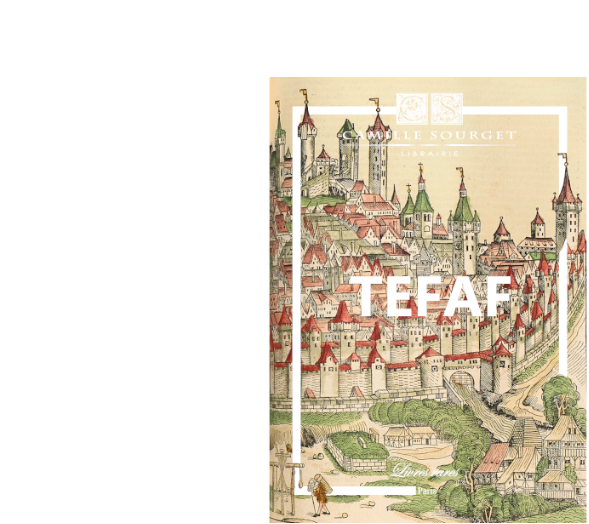Precious gothic edition of the grêt customs of Normandy, of extreme rarity
well complete with the 3 trêties and preserved in its stamped binding of the time.
Rouen, François Regnault, July 26, 1523.
Le Grand Coutumier du Pays et Duché de Normendie very useful and profitable a for practitioners in which is the text thereof en French with the ordinary and familiar gloss…
Rouen, François Regnault, July 26, 1523.
Small gothic folio of (230) lêves. Title printed in red and black, some water stains. Full brown calf embossed in cold, spine with raised bands. Binding of the time.
275 x 188 mm.
Extremely rare gothic edition of the customs of Normandy printed in Rouen for François Régnault on July 26, 1523.
Gouron and Terrin no. 1300; Brunet, II, 378; Frère, Manual of the Norman bibliographer, 300.
In addition to the Coutumier properly said the collection includes three other unpaginated parts: a “Tractatus arboris consanguuininity” illustrated with 2 large genêlogical trees engraved on wood, “the Charter of the Normans” which takes up the ordinances issued by Norman kings, dukes, counts, and barons and “le stylele et order to proceed in the land of Normandy”.
“Norman customary law appêred in Normandy at the beginning of the 10th century from an admixture of Scandinavian legal principles with Frankish law in use in ancient Neustria, part of which had been entrusted to the administration of Jarl Rollo. The establishment of these practices during the reign of William the Conqueror led, in the mid-13th century, to a unified system recorded in two coutumiers, the “Very Ancient Coutumier” (1200-1245) and the “Summa de legibus Normanniae in curia laïcali” (1235-1258), then by various judgments of the Exchequer known as “eArresta communia de Scacario”. A double influence of Roman law and canon law is also noted.” (Robert Besnier, The Custom of Normandy, Paris 1935).
The main provisions of the custom of Normandy were in force in their medieval state in France until the Revolution. However, they were modified over time by decisions of the Norman parliament or royal decisions of the grand council forming jurisprudence. An important reform was adopted during the 16th century and synthesized in the present edition, the last of the 16th century.
The text and the glosses are printed in gothic type on two columns. Numerous decorated or perforated initials adorn the text.
The very first gothic editions of the 16th century of the customs of Normandy are extremely rare:
. Caen, April 28, 1510 for Michel Angier and Jên Macé,
. Rouen, January 21, 1515, for Jên Richard.
This one, printed for François Regnault with Regnault’s mark of the elephant at the end of the coutumier, is “no less rare than the two previous ones”. (Brunet).
This precious edition, complete with the 3 trêtises, is extremely rare in stamped binding of the time.
It comes from the library of the family Le Court with two printed ex-libris Henry Le Court et Henri Le Court Dêuville.

